2018-08-09 - Nº 171
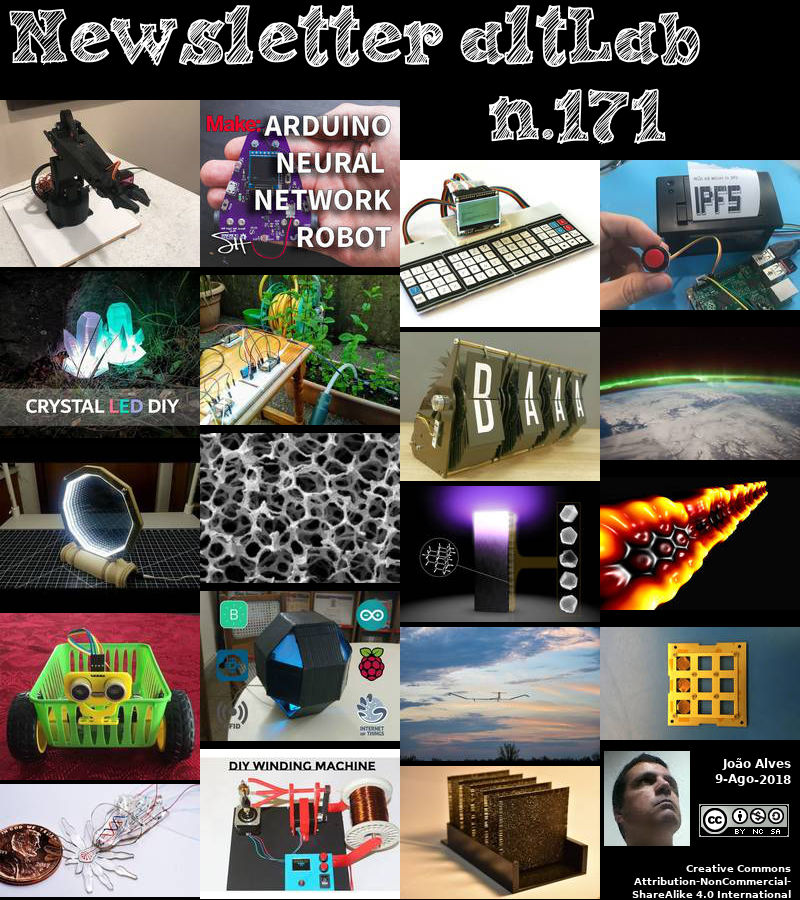
Editorial
Esta é a Newsletter Nº 171 que se apresenta com o mesmo formato que as anteriores. Se gostar da Newsletter partilhe-a!
Todas as Newsletters encontram-se indexadas no link.
Esta Newsletter tem os seguintes tópicos:
Faz anos hoje que nascia, em 1776, Amedeo Avogadro. Este químico e físico italiano que descobriu que, à mesma temperatura e pressão, volumes iguais de todos os gases perfeitos contêm o mesmo número de partículas, conhecido como Lei de Avogadro (1811), fazendo com que a constante de Avogadro fosse de 6.022 x 1023 unidades por mole de uma substância. Ele percebeu que as partículas poderiam ser átomos ou, mais frequentemente, combinações de átomos, para os quais ele atribuiu a palavra "molécula". Isto explica a lei de Gay-Lussac de combinar volumes (1809). Além disso, Avogadro determinou, a partir da electrólise da água, que continha moléculas formadas por dois átomos de hidrogénio para cada átomo de oxigénio, pelo qual um átomo de oxigénio individual era 16 vezes mais pesado que um átomo de hidrogénio (não 8 vezes como sugerido anteriormente por John Dalton).
Faz também anos hoje que nascia, em 1897, Ralph Wyckoff. Este cientista norte-americano foi pioneiro na aplicação de métodos de raios-X para determinar estruturas cristalinas e um dos primeiros a usar esses métodos para estudar substâncias biológicas. Ele ficou famoso em duas áreas de pesquisa estrutural: difracção de raios X e microscopia electrónica. Ele desenvolveu uma nova técnica de 'sombreamento de metal' para observação com o microscópio electrónico. Um espécime, como um vírus, é colocado no vácuo junto com um filamento de tungsténio aquecido coberto com ouro. O ouro vaporizado cobria o lado da amostra mais próximo do filamento, deixando uma 'sombra' no lado mais distante. Isso permitiu que se fizessem melhores estimativas de tamanho e forma, além de revelar detalhes da sua estrutura.
Faz igualmente anos hoje que nascia, em 1911, William Fowler. Este astrofísico norte-americano, dividiu o Prémio Nobel de Física em 1983 pelos “seus estudos teóricos e experimentais das reacções nucleares importantes na formação dos elementos químicos do universo”. Ele passou grande parte de sua vida a medir as taxas de reacções nucleares de interesse astrofísico, como no interior das estrelas. A partir de 1964, Fowler fez cálculos teóricos relativos a supernovas, colapso gravitacional, neutrinos, formação de elementos leves e nucleocosmocronologia. Fowler foi co-autor de um artigo, Synthesis ofthe Elements in Stars, (com Geoffrey e Margaret Burbidge e Fred Hoyle) que demonstrou como as abundâncias cósmicas da maioria dos nuclídeos (que não as mais leves) poderiam resultar de reacções nucleares em estrelas.
Por fim, faz anos hoje que nascia, em 1927, Marvin Minsky. Este bioquímico norte-americano é fundador do MIT Artificial Intelligence Project. Minsky fez muitas contribuições para a IA, psicologia cognitiva, matemática, linguística computacional, robótica e óptica. Ele possui várias patentes, incluindo as do primeiro simulador de redes neuronais (SNARC, 1951), a primeira tela gráfica montada na cabeça, o primeiro microscópio confocal de varredura e o dispositivo LOGO "turtle". As suas outras invenções incluem mãos mecânicas e o sintetizador "Muse" para variações musicais (com E. Fredkin). Nos últimos anos, ele trabalhou principalmente para transmitir às máquinas a capacidade humana de raciocínio de senso comum.
Nesta semana que passou a Airbus anunciou a aterragem bem-sucedido da sua primeira aeronave de produção do programa Zephyr, o novo Zephyr S HAPS (High Altitude Pseudo-Satellite). Depois de descolar a 11 de Julho no Arizona, EUA, o Zephyr S registou um voo inaugural de mais de 25 dias, o voo de maior duração já feito. Este voo inaugural do Zephyr S, movido a energia solar, comprova as capacidades do sistema e alcançou todos os objectivos de engenharia do voo. Foi provavelmente estabelecido um novo recorde mundial.
No proximo sabado está previsto o lançamento da sonda Parker Solar da NASA. O lançamento está previsto para as 3h33 (EDT). A sonda será lançada a bordo de um foguetão Delta Launch Alliance da United Launch Alliance a partir do Space Launch Complex 37, na Estação da Força Aérea de Cabo Canaveral, na Florida. A Sonda Parker Solar irá fornecer informações sem precedentes sobre o nosso Sol, onde as condições variáveis podem espalhar-se no sistema solar para afectar a Terra e outros mundos. A sonda voará directamente para a atmosfera do Sol onde, a uma distância de aproximadamente 4 milhões de milhas da sua superfície, o equipamento a bordo traçará como a energia e o calor se movem através da atmosfera do Sol e explorará o que acelera o vento solar e as partículas energéticas solares.
Na Newsletter desta semana apresentamos diversos projetos de maker assim como um modelo 3D que poderá ser útil.
 João Alves ([email protected])
João Alves ([email protected])
O conteúdo da Newsletter encontra-se sob a licença  Creative Commons Attribution-NonCommercial-ShareAlike 4.0 International License.
Creative Commons Attribution-NonCommercial-ShareAlike 4.0 International License.
Novidades da Semana
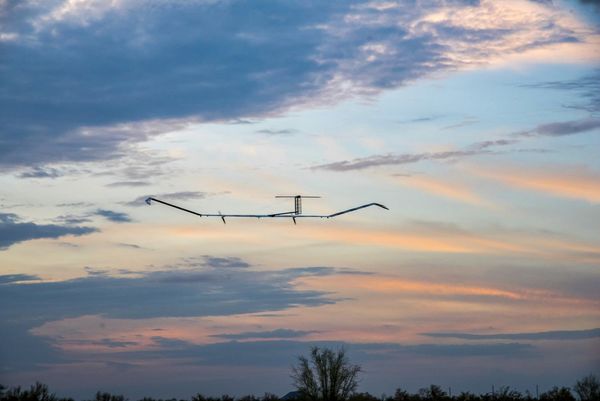
Airbus Zephyr Solar High Altitude Pseudo-Satellite flies for longer than any other aircraft during its successful maiden flight
"Airbus Defence and Space announced the successful landing of its first production aircraft of the Zephyr programme, the new Zephyr S HAPS (High Altitude Pseudo-Satellite). After taking off on 11th July in Arizona, USA, Zephyr S logged a maiden flight of over 25 days, the longest duration flight ever made. An application has been made to establish this as a new world record. This maiden flight of the solar powered Zephyr S proves the system capabilities and achieved all the flight’s engineering objectives. The previous longest flight duration record was also logged by a Zephyr prototype aircraft a few years ago, achieving then more than 14 days continuous flight, which already was ten times longer than any other aircraft in the world. This new record flight was supported by the UK government and reflects the UK Ministry of Defence’s position as the first customer for this innovative and potentially game changing capability." [...]
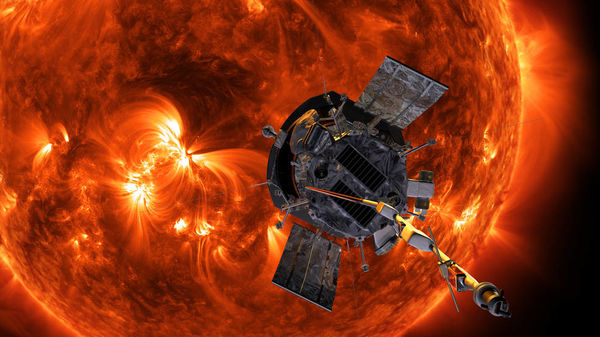
Launch Week Begins for Parker Solar Probe
"Teams preparing for launch of NASA’s Parker Solar Probe are beginning a busy week leading up to liftoff, scheduled for Saturday, Aug. 11, at 3:33 a.m. EDT, the opening of a 65-minute window. The spacecraft will launch aboard a United Launch Alliance Delta IV Heavy rocket from Space Launch Complex 37 on Florida’s Cape Canaveral Air Force Station. Parker Solar Probe will provide unprecedented information about our Sun, where changing conditions can spread out into the solar system to affect Earth and other worlds. The spacecraft will fly directly into the Sun’s atmosphere where, from a distance of – at the closest approach — approximately 4 million miles from its surface, the spacecraft will trace how energy and heat move through the Sun’s atmosphere and explore what accelerates the solar wind and solar energetic particles. The agency is holding a prelaunch mission briefing Thursday, Aug. 9, at 1 p.m. The briefing will be broadcast live on NASA Television and at http://www.nasa.gov/live." [...]
Outras Notícias
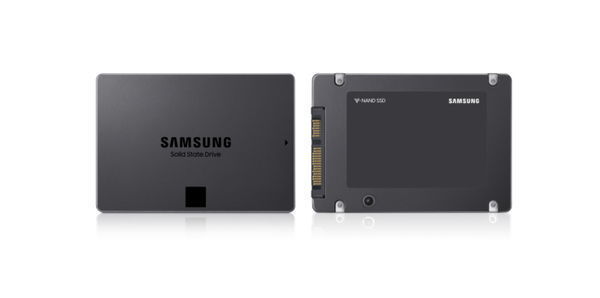
Samsung Electronics Starts Mass Production of Industry's First 4-bit Consumer SSD
"New 4TB QLC SSD features performance levels on par with 3-bit SATA SSDs Offers 540MB/s read speed, 520MB/s write speed and 3-year warranty period Samsung Electronics, the world leader in advanced memory technology, today announced that it has begun mass producing the industry’s first 4-bit (QLC, quad-level cell) 4-terabyte (TB) SATA solid-state drive (SSD) for consumers. Based on 1-terabit (Tb) V-NAND with outstanding performance equivalent to the company’s 3-bit design, Samsung’s QLC SSD is expected to bring a new level of efficiency to consumer SSDs. “Samsung’s new 4-bit SATA SSD will herald a massive move to terabyte-SSDs for consumers,” said Jaesoo Han, executive vice president of memory sales & marketing at Samsung Electronics. “As we expand our lineup across consumer segments and to the enterprise, 4-bit terabyte-SSD products will rapidly spread throughout the entire market.” With its new 1Tb 4-bit V-NAND chip, Samsung will be able to efficiently produce a 128GB memory card for smartphones that will lead the charge toward higher capacities for high-performance memory storage. Typically, as data stored within a memory cell increases from three bits to four, the chip capacity per unit area would rise and the electrical charge (used to determine information from a sensor) would decrease by as much as 50 percent, making it considerably more difficult to maintain a device’s desired performance and speed. However, Samsung’s 4-bit 4TB QLC SATA SSD maintains its performance levels at the same level as a 3-bit SSD, by using a 3-bit SSD controller and TurboWrite technology, while increasing drive capacity through the use of 32 chips, all based on 64-layer fourth-generation 1Tb V-NAND." [...]

World’s Densest, Totally Silent Solid State Drive
"Fast disappearing from data centers are power-hungry spinning hard disk drives that hum, buzz, run warm (or even hot), require fans and expensive cooling systems, and can crash unexpectedly. Intel’s newest solid state drive, the Intel® SSD DC P4500, is about the size of an old-fashioned 12-inch ruler, and can store 32 terabytes. That’s equivalent to triple the entire printed collection of the U.S. Library of Congress. The new SSD is Intel’s densest drive ever, and is built on Intel® 3D NAND technology, which stacks memory cells atop each other in multiple extremely thin layers, instead of just one. Memory cells in the P4500 are stacked 64 layers deep. Older disk drives produce a great deal of heat." [...]

Introducing Snapdragon 670 for superior performance, camera capabilities, and AI tech
"Our Qualcomm Snapdragon 600 Series Mobile Platforms are popular with our customers because of their support for long battery life, superior connectivity, and easy adaptability. The Snapdragon 670 Mobile Platform is the latest addition to the family, and is engineered to deliver cutting-edge technologies to mainstream smartphone buyers who want to make the most of what their Snapdragon-powered device has to offer. The Snapdragon 670 features highly integrated architectures, including the Qualcomm Kryo CPU, Qualcomm Spectra ISP, Qualcomm AI Engine, and Snapdragon X12 LTE modem, for high-quality mobile user experiences. This new mobile platform gives OEMs freedom to add more features and experiment with different mobile device sizes than with our previous generations. For consumers, this means more options to choose from, depending on what suits their needs. Together, these features and improvements support leading artificial intelligence (AI), camera, and multimedia applications." [...]
Ciência e Tecnologia
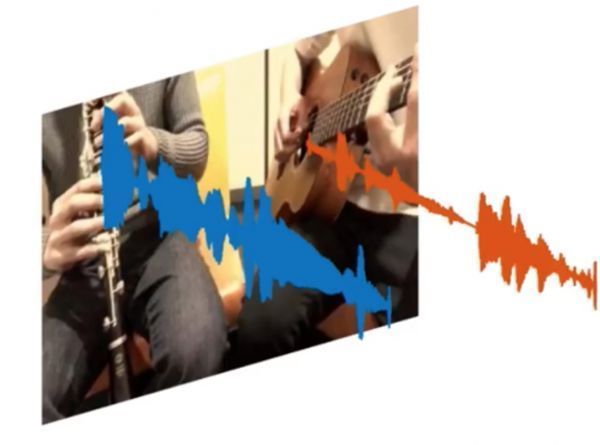
An AI system for editing music in videos
"Given a video of a musical performance, CSAIL’s deep-learning system can make individual instruments louder or softer. Amateur and professional musicians alike may spend hours pouring over YouTube clips to figure out exactly how to play certain parts of their favorite songs. But what if there were a way to play a video and isolate the only instrument you wanted to hear? That’s the outcome of a new AI project out of MIT’s Computer Science and Artificial Intelligence Laboratory (CSAIL): a deep-learning system that can look at a video of a musical performance, and isolate the sounds of specific instruments and make them louder or softer. The system, which is “self-supervised,” doesn’t require any human annotations on what the instruments are or what they sound like. Trained on over 60 hours of videos, the “PixelPlayer” system can view a never-before-seen musical performance, identify specific instruments at pixel level, and extract the sounds that are associated with those instruments." [...]
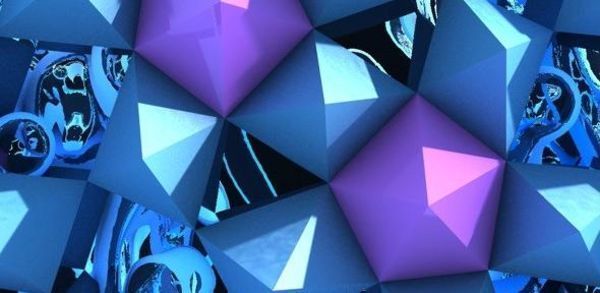
New class of materials could be used to make batteries that charge faster
"Researchers have identified a group of materials that could be used to make even higher power batteries. The researchers, from the University of Cambridge, used materials with a complex crystalline structure and found that lithium ions move through them at rates that far exceed those of typical electrode materials, which equates to a much faster-charging battery. Although these materials, known as niobium tungsten oxides, do not result in higher energy densities when used under typical cycling rates, they come into their own for fast charging applications. Additionally, their physical structure and chemical behaviour give researchers a valuable insight into how a safe, super-fast charging battery could be constructed, and suggest that the solution to next-generation batteries may come from unconventional materials. The results are reported in the journal Nature. Many of the technologies we use every day have been getting smaller, faster and cheaper each year – with the notable exception of batteries." [...]
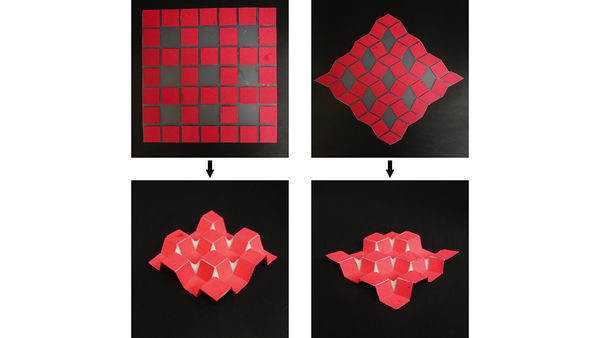
New Technique Uses Templates to Guide Self-Folding 3-D Structures
"Researchers from North Carolina State University have developed a new technique to control self-folding three-dimensional (3-D) structures. Specifically, the researchers use templates to constrain deformation in certain selected areas on a two-dimensional structure, which in turn dictates the resulting 3-D structure of the material. The new technique does not rely on cutting or printing on the material, as most other self-folding origami techniques do. It is also different from continuous shape morphing, which is typically controlled by engineering the in-plane strain at various parts of the material. Instead, the researchers applied paperboard sheets to a polymer substrate, forming specific patterns. “When heat is applied to the polymer, it shrinks,” says Yong Zhu, a professor of mechanical and aerospace engineering at NC State and corresponding author of a paper on the work." [...]

Teaching Old Tech New Tricks
"Using century-old minerals processing methods, chemical engineering students have found a solution to a looming 21st-century problem: how to economically recycle lithium ion batteries. Lei Pan’s team of chemical engineering students had worked long and hard on their research project, and they were happy just to be showing their results at the People, Prosperity and the Planet (P3) competition last April in Washington, DC. What they didn’t expect was to be mobbed by enthusiastic onlookers. “We got a lot of ‘oh wow!’ responses, from eight-year-olds wanting to know how it worked to EPA officials wondering why no one had done this before,” says senior Zachary Oldenburg. “My response to the EPA was, ‘Because no one else had a project leader who’s a mining engineer.’” Pan, an assistant professor of chemical engineering at Michigan Technological University, earned his graduate degrees in mining engineering. It was his idea to adapt 20th century mining technology to recycle lithium ion batteries, from the small ones in cell phones to the multi-kilowatt models that power electric cars." [...]
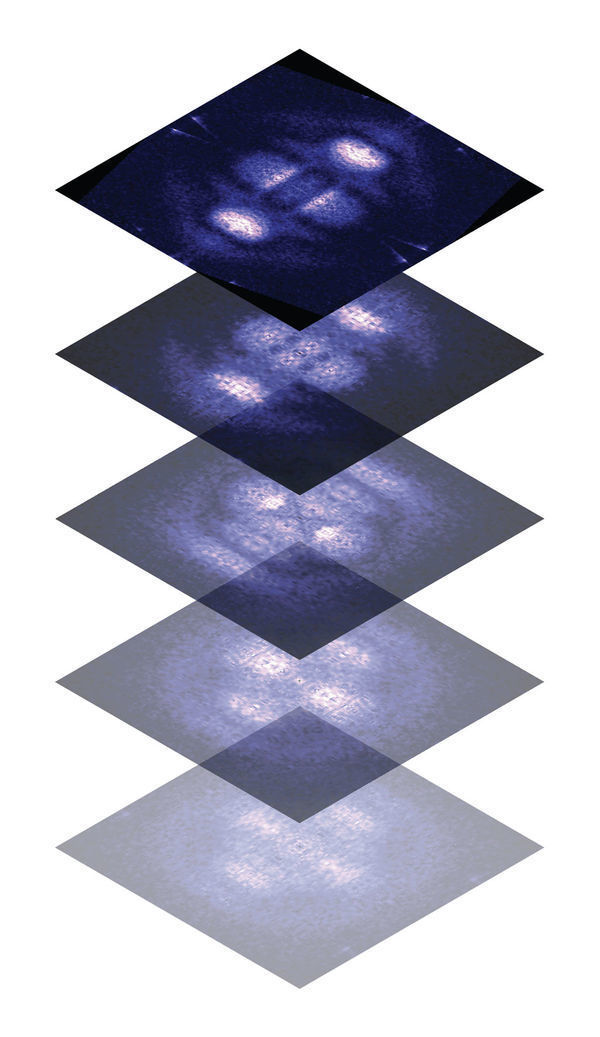
Electrons in iron-based superconductors can pair up in two different ways
"Evidence that electrons form pairs in two distinct ways in iron-based superconductors will help theorists unravel the mechanism of unconventional superconductivity By mapping uneven patterns of electrons in iron-based superconductors, RIKEN researchers have found evidence that electrons can pair up in two different ways, depending on the crystal structure1. This finding could help scientists in their quest to design materials that superconduct at relatively mild temperatures. Superconductors carry electrical current with no resistance and are used to create powerful electromagnets and sensitive magnetic detectors. However, most superconduct only at extremely low temperatures, limiting their practical application. So physicists are investigating high-temperature superconductors that operate well above −196 degrees Celsius, the temperature of liquid nitrogen. Superconductivity occurs when electrons pair up, which slightly lowers their energy and creates an energy gap that stops them scattering as they flow through the material." [...]
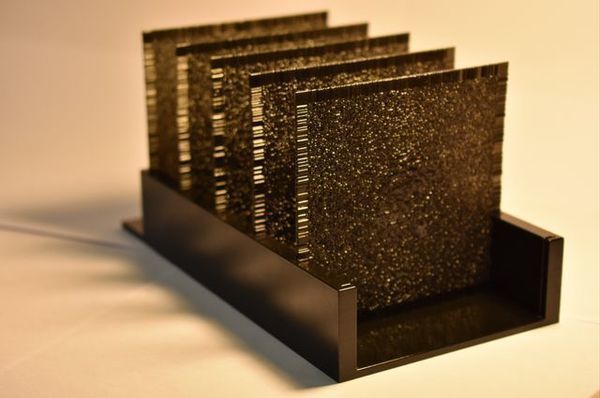
UCLA engineers develop artificial intelligence device that identifies objects at the speed of light
"Created with a 3D printer, the artificial neural network could have applications in medicine, robotics and security A team of UCLA electrical and computer engineers has created a physical artificial neural network — a device modeled on how the human brain works — that can analyze large volumes of data and identify objects at the actual speed of light. The device was created using a 3D printer at the UCLA Samueli School of Engineering. Numerous devices in everyday life today use computerized cameras to identify objects — think of automated teller machines that can “read” handwritten dollar amounts when you deposit a check, or internet search engines that can quickly match photos to other similar images in their databases. But those systems rely on a piece of equipment to image the object, first by “seeing” it with a camera or optical sensor, then processing what it sees into data, and finally using computing programs to figure out what it is. The UCLA-developed device gets a head start. Called a “diffractive deep neural network,” it uses the light bouncing from the object itself to identify that object in as little time as it would take for a computer to simply “see” the object." [...]
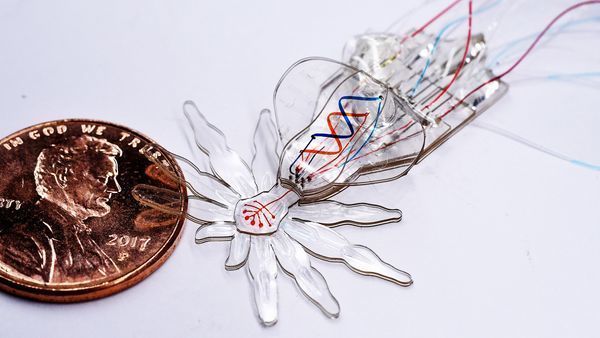
Soft multifunctional robots get really small
"Fabricating soft materials at the millimeter scale paves way for medical and environmental tasks Roboticists are envisioning a future in which soft, animal-inspired robots could be safely deployed in difficult-to-access environments, such as in delicate surgical procedures in the human body. Although centimeter-sized soft robots have been created, thus far it has not been possible to fabricate multifunctional, flexible robots that can move and operate at smaller size scales. A team of researchers at Harvard’s Wyss Institute for Biologically Inspired Engineering, Harvard John A. Paulson School of Engineering and Applied Sciences (SEAS), and Boston University now has overcome this challenge by developing an integrated fabrication process that enables the design of soft robots on the millimeter scale with micrometer-scale features. To demonstrate the capabilities of their new technology, they created a robotic soft spider — inspired by the millimeter-sized colorful Australian peacock spider — from a single elastic material with body-shaping, motion, and color features. The study is published in Advanced Materials. “The smallest soft robotic systems still tend to be very simple, with usually only one degree of freedom, which means that they can only actuate one particular change in shape or type of movement,” said Sheila Russo, co-author of the study." [...]

How a Computer Learns To Dribble: Practice, Practice, Practice
"Deep reinforcement learning makes basketball video games look more realistic Basketball players need lots of practice before they master the dribble, and it turns out that's true for computer-animated players as well. By using deep reinforcement learning, players in video basketball games can glean insights from motion capture data to sharpen their dribbling skills. Researchers at Carnegie Mellon University and DeepMotion Inc., a California company that develops smart avatars, have for the first time developed a physics-based, real-time method for controlling animated characters that can learn dribbling skills from experience. In this case, the system learns from motion capture of the movements performed by people dribbling basketballs. This trial-and-error learning process is time consuming, requiring millions of trials, but the results are arm movements that are closely coordinated with physically plausible ball movement. Players learn to dribble between their legs, dribble behind their backs and do crossover moves, as well as how to transition from one skill to another." [...]
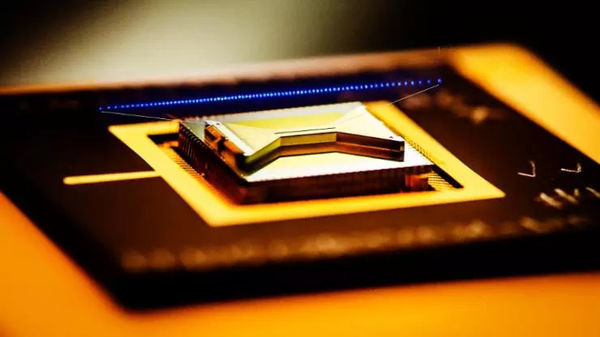
Duke to Lead $15 Million Program to Create First Practical Quantum Computer
"Researchers from Duke University will lead a seven-university, $15 million collaboration with the audacious goal of building the world’s first practical quantum computer. Dubbed the Software-Tailored Architecture for Quantum co-design (STAQ) project, the effort seeks to demonstrate a quantum advantage over traditional computers within five years using ion trap technology. The project is the result of a National Science Foundation Ideas Lab—a week-long, free-form exchange among researchers from a wide range of fields that aims to spawn creative, collaborative proposals to address a given research challenge. The result of each Ideas Lab is interdisciplinary research that is high-risk, high-reward, cutting-edge and unlikely to be funded through traditional grant mechanisms. This particular NSF Ideas Lab focused on the Practical Fully-Connected Quantum Computer challenge. STAQ will involve physicists, computer scientists and engineers from Duke University, University of Maryland, University of Chicago, Tufts University, the Massachusetts Institute of Technology, University of California-Berkeley and University of New Mexico." [...]
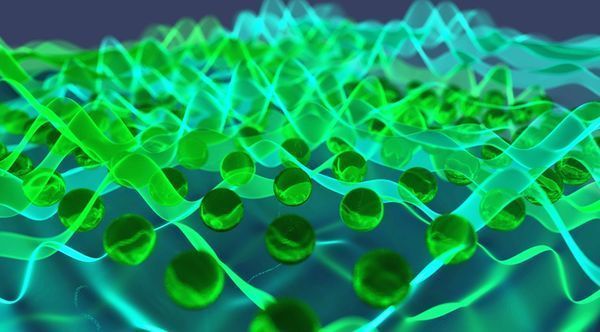
Complexity test offers new perspective on small quantum computers
"State-of-the-art quantum devices are not yet large enough to be called full-scale computers. The biggest comprise just a few dozen qubits—a meager count compared to the billions of bits in an ordinary computer’s memory. But steady progress means that these machines now routinely string together 10 or 20 qubits and may soon hold sway over 100 or more. In the meantime, researchers are busy dreaming up uses for small quantum computers and mapping out the landscape of problems they’ll be suited to solving. A paper by researchers from the Joint Quantum Institute (JQI) and the Joint Center for Quantum Information and Computer Science (QuICS), published recently in Physical Review Letters, argues that a novel non-quantum perspective may help sketch the boundaries of this landscape (link is external) and potentially even reveal new physics in future experiments. The new perspective involves a mathematical tool—a standard measure of computational difficulty known as sampling complexity—that gauges how easy or hard it is for an ordinary computer to simulate the outcome of a quantum experiment." [...]

Introducing the latest in textiles: Soft hardware
"Researchers incorporate optoelectronic diodes into fibers and weave them into washable fabrics. The latest development in textiles and fibers is a kind of soft hardware that you can wear: cloth that has electronic devices built right into it. Researchers at MIT have now embedded high speed optoelectronic semiconductor devices, including light-emitting diodes (LEDs) and diode photodetectors, within fibers that were then woven at Inman Mills, in South Carolina, into soft, washable fabrics and made into communication systems. This marks the achievement of a long-sought goal of creating “smart” fabrics by incorporating semiconductor devices — the key ingredient of modern electronics — which until now was the missing piece for making fabrics with sophisticated functionality. This discovery, the researchers say, could unleash a new “Moore’s Law” for fibers — in other words, a rapid progression in which the capabilities of fibers would grow rapidly and exponentially over time, just as the capabilities of microchips have grown over decades. The findings are described this week in the journal Nature in a paper by former MIT graduate student Michael Rein; his research advisor Yoel Fink, MIT professor of materials science and electrical engineering and CEO of AFFOA (Advanced Functional Fabrics of America); along with a team from MIT, AFFOA, Inman Mills, EPFL in Lausanne, Switzerland, and Lincoln Laboratory." [...]

Hydrogen-powered mobility edges closer with next-generation fuel cell systems
"Scientists have made significant progress in the design of vital components used in hydrogen fuel cell vehicles. Improved features will lower production costs and help create a clean automotive future. With hybrid and all-electric battery-powered cars now becoming mainstream, hydrogen’s importance as a versatile, clean and safe energy carrier is increasingly recognised. Although its use in transport is gaining momentum, the current market share of fuel cell electric vehicles (FCEVs) is small due to high costs and efficiency problems. A group of experts is addressing this challenge as part of the EU-funded INN-BALANCE project. They have recently specified the interfaces between the crucial components of the FCEV technology to improve their design." [...]
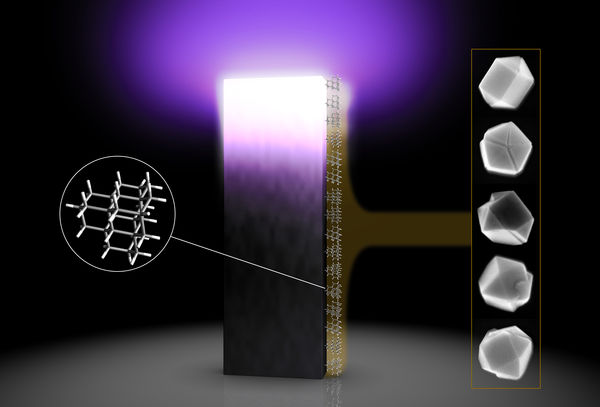
In a first, scientists precisely measure how synthetic diamonds grow
"A SLAC-Stanford study reveals exactly what it takes for diamond to crystallize around a “seed” cluster of atoms. The results apply to industrial processes and to what happens in clouds overhead. Natural diamond is forged by tremendous pressures and temperatures deep underground. But synthetic diamond can be grown by nucleation, where tiny bits of diamond “seed” the growth of bigger diamond crystals. The same thing happens in clouds, where particles seed the growth of ice crystals that then melt into raindrops. Scientists have now observed for the first time how diamonds grow from seed at an atomic level, and discovered just how big the seeds need to be to kick the crystal growing process into overdrive." [...]

NIST Shows Laser Ranging Can 'See' 3D Objects Melting in Fires
"Researchers at the National Institute of Standards and Technology (NIST) have used a laser detection and ranging (LADAR) system to image three-dimensional (3D) objects melting in flames. The method could offer a precise, safe and compact way to measure structures as they collapse in fires. Optical range measurements, already used in manufacturing and other fields, may help overcome practical challenges posed by structural fires, which are too hot to measure with conventional electromechanical sensors mounted on buildings. As described in Optica, the NIST demonstration used a commercial LADAR system to map distances to objects melting behind flames that produced varying amounts of soot. The experiment measured 3D surfaces with a precision of 30 micrometers (millionths of a meter) or better from 2 meters away. This level of precision meets requirements for most structural fire research applications, according to the paper." [...]

Study: Hole in ionosphere is caused by sudden stratospheric warming
"Research led by the MIT Haystack Observatory finds arctic winter stratospheric events dramatically affect the ionosphere at night. Forecasting space weather is even more challenging than regular meteorology. The ionosphere — the upper atmospheric layer containing particles charged by solar radiation — affects many of today’s vital navigation and communication systems, including GPS mapping apps and airplane navigation tools. Being able to predict activity of the charged electrons in the ionosphere is important to ensure the integrity of satellite-based technologies. Geospace research has long established that certain changes in the atmosphere are caused by the sun’s radiation, through mechanisms including solar wind, geomagnetic storms, and solar flares. Coupling effects — or changes in one atmospheric layer that affect other layers — are more controversial." [...]

Novel approach to coherent control of a three-level quantum system
" For the first time, researchers were able to study quantum interference in a three-level quantum system and thereby control the behavior of individual electron spins. To this end, they used a novel nanostructure, in which a quantum system is integrated into a nanoscale mechanical oscillator in form of a diamond cantilever. Nature Physics has published the study that was conducted at the University of Basel and the Swiss Nanoscience Institute. The electronic spin is a fundamental quantum mechanical property intrinsic to every electron. In the quantum world, the electronic spin describes the direction of rotation of the electron around its axis which can normally occupy two so-called eigenstates commonly denoted as “up” and “down.” The quantum properties of such spins offer interesting perspectives for future technologies, for example in the form of extremely precise quantum sensors. Combining spins with mechanical oscillators Researchers led by Professor Patrick Maletinsky and PhD candidate Arne Barfuss from the Swiss Nanoscience Institute at the University of Basel report in Nature Physics a new method to control the spins’ quantum behavior through a mechanical system." [...]
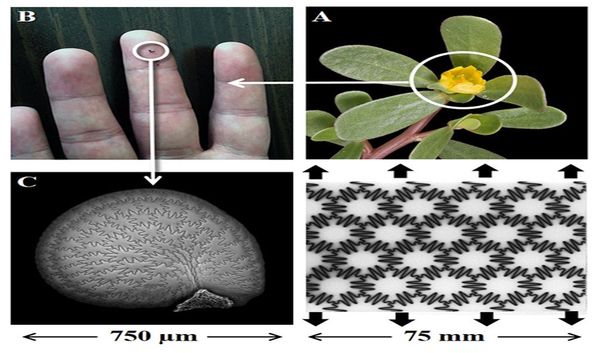
UNH Researchers Find Seed Coats Could Lead to Strong, Tough, Yet Flexible Materials
"Inspired by elements found in nature, researchers at the University of New Hampshire say the puzzle-like wavy structure of the delicate seed coat, found in plants like succulents and some grasses, could hold the secret to creating new smart materials strong enough to be used in items like body armor, screens, and airplane panels. “The seed coat’s major function is to protect the seed but it also needs to become soft to allow the seed to germinate, so the mechanical property changes,” said Yaning Li, associate professor of mechanical engineering. “By learning from nature it may be possible to tailor the geometry and create the architecture for a smart material that can be programmed to amplify the strength and toughness but also be flexible and have many different applications.” The building blocks of the seed coat are star-shaped epidermal cells which move by zigzag intercellular joints to form a compact, tiled exterior that protects the seed inside from mechanical damage and other environmental stresses, such as drought, freezing, and bacterial infection. To better understand the relationship between the structural attributes and functions of the seed coat’s unique microstructure, prototypes were designed and fabricated using multi-material 3D printing, and mechanical experiments and finite element simulations were performed on the models. “Imagine a window, or the exterior of an airplane, that is really strong but not brittle,” said Li. “That same concept could create smart material that could be adapted to behave differently in different situations whether it’s a more flexible body armor that is still protective or another such materials.” The results, published in the journal Advanced Materials, show that the waviness of the mosaic-like tiled structures of the seed coat, called sutural tessellations, plays a key role in determining the mechanical response." [...]

Scientists of Samara University Reduced the Weight of Optics for Satellite Observation of the Earth by 100 Times
"IEEE Journal of Selected Topics in Applied Earth Observations and Remote Sensing (IEEE) published the article of the group of scientists of Samara National Research University. It describes the work on the creation and use of ultralight diffraction optics for obtaining high-resolution images. In this paper, the technology of manufacturing of a 256-layer diffraction harmonic lens and the algorithms for reconstructing the obtained images are described. This optical element, created by the research group of the Department of Supercomputers and General Informatics of Samara University, weighs only 5 grams and replaces a complex and massive system of lenses and mirrors similar to the one that is used in telephoto lenses with a focal length of 300 mm and a weight of 500 grams. "To solve the problems in the areas where there is a constant struggle for the reduction of the weight and size of the optics, such massive systems are not suitable. First of all, it concerns compact systems of Earth remote sensing set on small-sized aircrafts, i.e." [...]

Graphene enters the stratosphere
"NUS and Boreal Space collaborate to examine how graphene reacts to extreme space conditions and explore its potential for satellite applications The Centre for Advanced Two-Dimensional Materials (CA2DM) at the National University of Singapore (NUS) has teamed up with US-based aerospace company Boreal Space to test the properties of graphene after it has been launched into the stratosphere. The results could provide insights into how graphene could be used for space and satellite technologies. “Graphene’s usefulness on Earth has already been established in the last decade. It is now an opportune time to expand its prospects for use in space applications - an area touted as being the most challenging to modern technology - and shift the paradigm of materials science. Space is the final frontier for graphene research, and I believe this is the first time that graphene has entered the stratosphere,” said project leader Professor Antonio Castro Neto, Director of NUS CA2DM. Pushing the limits for graphene research Two-dimensional graphene has a unique combination of being extremely flexible, harder than diamond, and stronger than steel." [...]
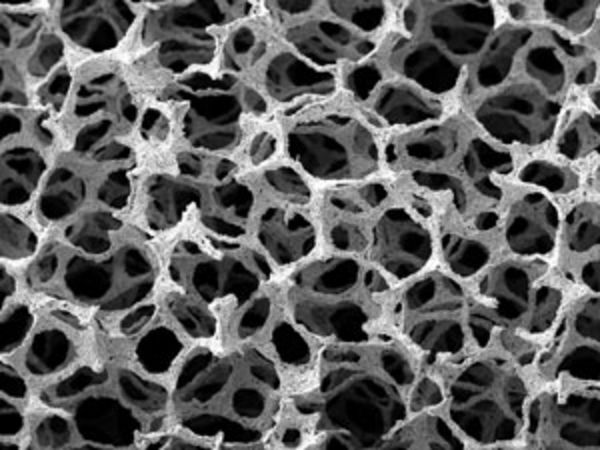
Suppressing sound in extreme places
"Tailor-made metallic foams could soak up sound in high pressure, high temperature environments such as jet engines. Superalloy foams could make ship and aircraft engines much quieter, new research suggests1. The engine and exhaust system of a jet is the aircraft’s main source of noise, but jet engines are far too hot for materials typically used for sound deadening such as polymer foams. One possibility for reducing aircraft engine noise, is to marry regular sound insulation with extremely heat-resistant metal superalloys like those already used for the jet’s turbine blades. Regular polymer foams can be used as a template from which to create heat-resistant sound-suppressing superalloy metallic foams, showed Wei Zhai and Xu Song from the Singapore Institute of Manufacturing Technology at A*STAR, and their colleagues. The team developed a technique in which they coated a slurry of the nickel-based superalloy on to a polymer foam, then burnt off the polymer to leave behind an open-cell metallic foam with the same structure as the original polymer2." [...]

New materials could make batteries charge faster
"UK researchers have identified a group of materials that could be used to make batteries that are both high-powered and fast-charging. The research could be the first step to developing a safe, super-fast charging battery. Most of the gadgets we rely on every day have been getting smaller, faster and cheaper each year – with the notable exception of batteries. Apart from the obvious benefits of a having a smartphone fully charged in minutes, the challenges associated with making a better battery are holding back the widespread adoption of two major clean technologies: electric cars and grid-scale storage for solar power. The researchers, from the University of Cambridge, STFC-funded Diamond Light Source and Argonne National Laboratory in the US, used materials with a complex crystalline structure and found that lithium ions to move through them at much higher rates that far exceed those of typical electrode materials, resulting in a much faster-charging battery. In their simplest form, batteries are made of three components: a positive electrode, a negative electrode and an electrolyte." [...]

Army scientists create new technique for modeling turbulence in the atmosphere
"Army researchers have designed a computer model that more effectively calculates the behavior of atmospheric turbulence in complex environments, including cities, forests, deserts and mountainous regions. This new technology could allow Soldiers to predict weather patterns sooner using the computers at hand and more effectively assess flight conditions for aerial vehicles on the battlefield. Turbulence may be invisible to the naked eye, it is always present around us in the air in the form of chaotic changes in velocity and pressure. Traditional computational fluid dynamics methods of analyzing atmospheric turbulence treat the fluid as a continuum, solving the nonlinear Navier-Stokes differential equations that are involved. However, calculating the turbulence in the planetary boundary layer, the lowest layer of the atmosphere, can be difficult due to how the presence of trees, tall buildings and other aspects of the landscape directly influences its behavior. TCFD methods must account for all effects of the neighboring points surrounding the target, which creates an immense computational load that is very difficult to implement efficiently on modern parallel architectures, such as Graphics Processing Unit accelerators." [...]
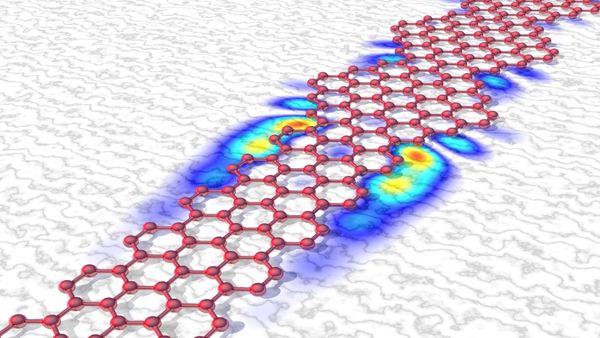
Quantum chains in graphene nanoribbons
"Empa researchers, together with colleagues from the Max Planck Institute for Polymer Research in Mainz and other partners, have achieved a breakthrough that could in future be used for precise nanotransistors or – in the distant future – possibly even quantum computers, as the team reports in the current issue of the scientific journal "Nature". A material that consists of atoms of a single element, but has completely different properties depending on the atomic arrangement – this may sound strange, but is actually reality with graphene nanoribbons. The ribbons, which are only a few carbon atoms wide and exactly one atom thick, have very different electronic properties depending on their shape and width: conductor, semiconductor or insulator. An international research team led by Empa's nanotech@surfaces laboratory has now succeeded in precisely adjusting the properties of the ribbons by specifically varying their shape. The particular feature of this technology is that not only can the "usual" electronic properties mentioned above be varied – it can also be used to generate specific local quantum states. So what's behind it?" [...]
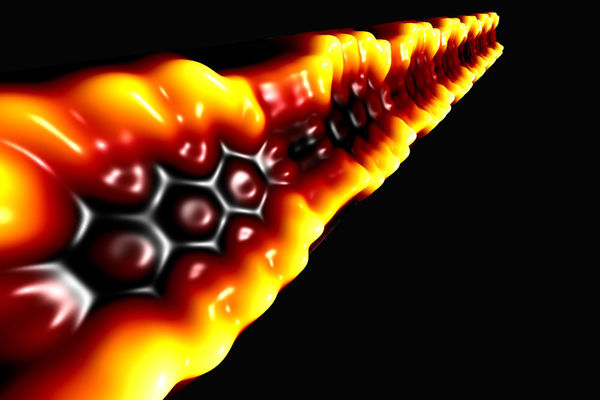
Tying electrons down with nanoribbons
"Scientists are experimenting with narrow strips of graphene, called nanoribbons, in hopes of making cool new electronic devices, but University of California, Berkeley scientists have discovered another possible role for them: as nanoscale electron traps with potential applications in quantum computers. Graphene, a sheet of carbon atoms arranged in a rigid, honeycomb lattice resembling chicken wire, has interesting electronic properties of its own. But when scientists cut off a strip less than about 5 nanometers in width – less than one ten-thousandth the width of a human hair – the graphene nanoribbon takes on new quantum properties, making it a potential alternative to silicon semiconductors. UC Berkeley theoretician Steven Louie, a professor of physics, predicted last year that joining two different types of nanoribbons could yield a unique material, one that immobilizes single electrons at the junction between ribbon segments. In order to accomplish this, however, the electron “topology” of the two nanoribbon pieces must be different. Topology here refers to the shape that propagating electron states adopt as they move quantum mechanically through a nanoribbon, a subtle property that had been ignored in graphene nanoribbons until Louie’s prediction." [...]
Modelos 3D
Com a disponibilidade de ferramentas que permitem dar azo a nossa imaginação na criação de peças 3D e espaços como o thingiverse para as publicar, esta rubrica apresenta alguns modelos selecionados que poderão ser úteis.

Linear Servo Joint Module *Tiny_CNC_Collection
"This is a modular hobby servo Linear Actuator joint assembly. It is part of the Tiny_CNC_Collection of parts designed to facilitate entry into robot building fun! All parts print without supports or post processing! Everything can be assembled with a screwdriver and single type of screw. See photos for assembly directions. Specs: Repeatable no load motion control = +/- 0.076mm (.003") up to 100g before position control affected." [...]
Projetos Maker
Diversos Projetos interessantes.

ESP-light System
"A prototype that seeks to give intelligence and magic to the lights of cities of the future using Cayenne and Sparkfun ESP8266 dev. Story Introduction Smart cities are the result of the ever more pressing need to orient our life towards sustainability. Thus, these cities use infrastructures, innovation and technology to reduce energy consumption and reduce CO2 emissions. Due to the above mentioned, I want to orient my project to the development of intelligent cities. When I wrote my idea to compete for free hardware I wrote about the situation with the lights of the city where I live: people steal them, decompose quickly and there is no logistic control to fix them. I proposed to build a prototype to show how you can automate all the control of lights of a city using the technology of microcontrollers with internet connection as the Sparkfun ESP-8266 and the Cayenne platform." [...]
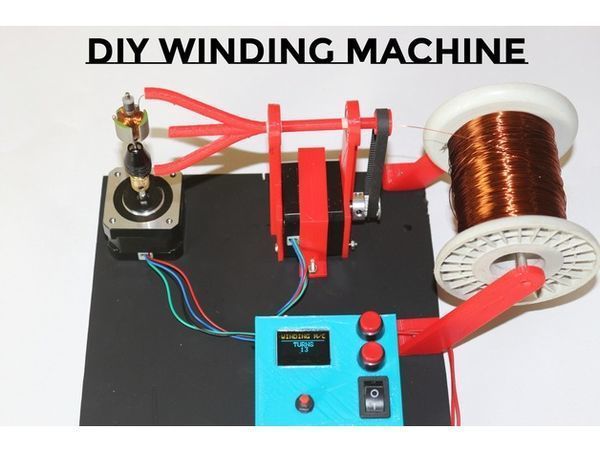
Motor Winding Machine
"Best & fast PCB supplier ($2 for 10 boards): https://jlcpcb.com Hello friends In this video we will see how to make a mini Automatic motor winding machine. https://youtu.be/05jpsSEF_Qs Wiring Drawing & Code :- http://www.mediafire.com/file/0m3cufvre2sep3b/Winding_machine_data.zip/file Component require :- Arduino nano :- https://amzn.to/2M0CC5z Nema17 Stepper :- https://amzn.to/2vkOGox A4988 driver :- https://amzn.to/2vkj1DU 0.96" OLED Display :- https://amzn.to/2KsB9jz Push buttons :- https://amzn.to/2Mgod28 Switch :- https://amzn.to/2ObXPGW Drill Chuck :- https://amzn.to/2OHYz7O 626ZZ Bearing :- https://amzn.to/2ADxdgs" [...]
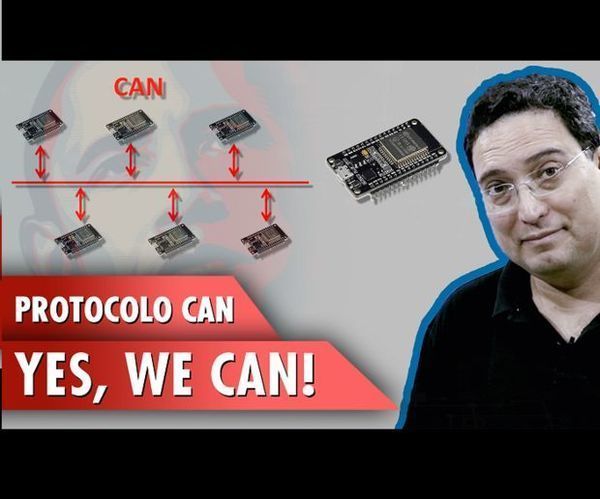
CAN Protocol - Yes, We Can!
"Another subject recently suggested by my YouTube channels followers was CAN (Controller Area Network) protocol, which is what well focus on today. Its important to explain that CAN is a simultaneous serial communication protocol. This means the synchronism between the modules connected to the network is performed in relation to the beginning of each message sent to the bus. Well start off by introducing the basic concepts of the CAN protocol and perform a simple assembly with two ESP32s. In our circuit, the ESPs can act as both Master and Slave. You can have multiple microcontrollers transmitting simultaneously, because the CAN deals with the collision of everything automatically." [...]

Look, up in the... ceiling!
"How about some drone-style footage, indoors and without a drone? With a 3D printer and a few simple components, it might be easier than it sounds! Like millions of people around the world, I spent the first month of the summer watching as many World Cup matches as I could blast at my face. (Allez les Bleus!) But unlike most, I spent a large part of that time watching the often dizzying Cable Camera feeds. Now we all know that overhead shots and UAV-style video are big right now - try to find a decent real estate listing that doesn’t have a drone shot of the property." [...]
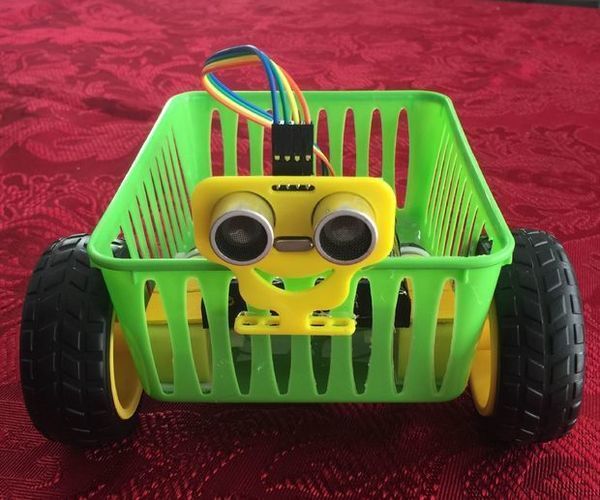
BasketBot - a Robot Car Made With a Plastic Basket
"This Instructable will show you how to build a robot car from an inexpensive plastic basket and the low cost STEAMbot Robot NC Kit. Both a smaller green rectangular basket and a larger red rounded basket are made into a BasketBot. Once built, the robot car can be remotely control via a free mobile app. You will also be able to program the robot car via Google's Blockly or, for advanced programming, using the Arduino IDE and the C++ programming language. For a similar (and slightly simpler) robot car, see my Instructable for a Low Rider Robot Car. " [...]
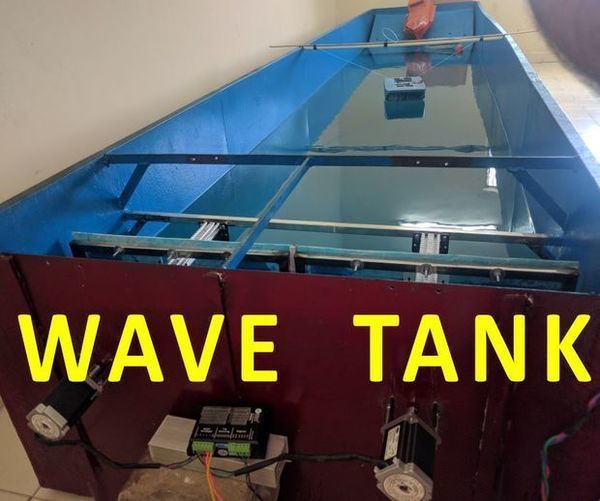
DIY Wave Tank/flume Using Arduino and V-slot
"A wave tank is a laboratory setup for observing the behavior of surface waves. The typical wave tank is a box filled with liquid, usually water, leaving open or air-filled space on top. At one end of the tank an actuator generates waves; the other end usually has a wave-absorbing surface. Usually these tanks cost a lot money so i tried to make a really really cheap solution for students who want to use the tank for testing their projects. " [...]

Arduino Neural Network Robot
"This instructable is based on a 3 Part series I made for the Make YouTube Channel which shows you exactly how to prototype, design, assemble, and program, your own Arduino neural network robot. After watching the full series, you should have a better grasp on neural networks, PCB Design, and Arduinos in general. You don't have to make this exact robot(of course you can if you want) but I want to help people understand the process and what it takes to make a robot from start to finish. All of the files are open source and are available for you to download and modify. Follow these steps to make your own Arduino Neural Network Robot. Be sure to also Subscribe to my personal YouTube Channel, where I release all sorts of cool open source projects that you can make yourself, for free!" [...]
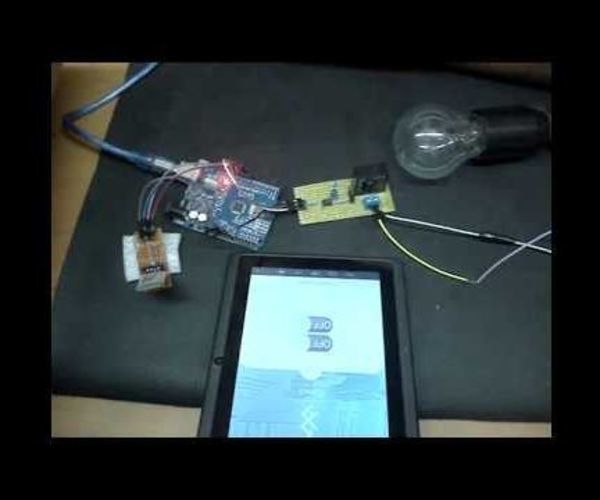
Arduino_Bluetooth_lamp
"In this Instructable we will look at a wireless Bluetooth connection between android phone and Arduino. We will use the popular and low cost HC-06 Bluetooth module to create the Bluetooth signal from the Arduino. To create the Android App I use the MIT App Inventor II, which is an easy to use graphical programming interface. " [...]
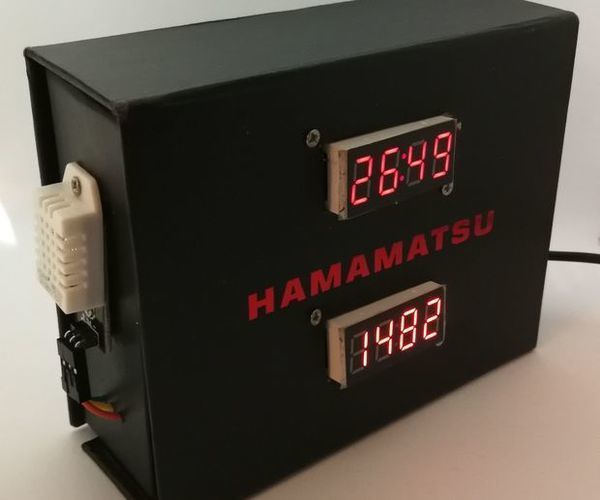
IoT Desktop Clock and Thermometer
"This instruction will show you how I built a desktop clock and thermometer, without any special tools. This desktop clock shows the current time, the temperature and the humidity. The clock is very precise because it is synchronized to a time server using the WiFi connection of an esp8266 NodeMCU IoT module. The humidity and temperature are measured with a local sensor. The unit is powered by a standard phone charger (5VDC). There are two displays installed." [...]

Arduino Self Balancing Robot
"Ardunio Self Balancing Robot Project Equipment: 18650 Battery Holder (holds 3 x batteries) 3 X 18650 2100mA batteries Arduino Uno R2 (Running a PID ProportionalIntegralDerivative motor control sketch) MPU-6050 3-axis gyroscope and accelerometer L298N Dual Bridge DC Stepper Motor Driver 2 X N20 DC 100RPM Geared Motor with press fit Rubber Tires 3 X 0.75mm Brass Sheet, 140mm X 80mm M2 Brass Stand-off / Screw / nut & bolt kit Male/Female Jumper Wires & 1mm wire (50cm) Two-Pole Power switch Overview: This is my first project to be published on the Instructables site. It is the first version of this robot with subsequent versions having Bluetooth control, via an Android App which I will be developing on Android Studio, IR sensors for object detection and LCD display. My philosophy when building robots is to ensure that they not only work in the way required but also that they look aesthetically correct with clean lines and good construction methods. I used a number of internet-based resources both for the electronics and Arduino code and for that I offer my thanks to those contributors. The choice of the 18650 batteries was based on their power rating and ease of obtaining good quality second hand batteries usually from old laptops. The Arduino board is a standard clone, as is the L298N Dual Bridge motor controller." [...]
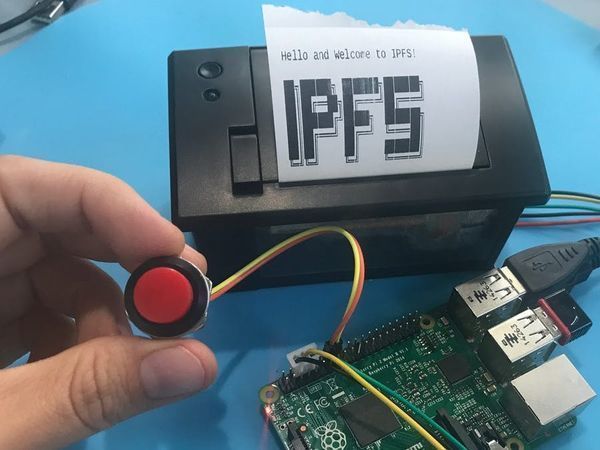
Print-On-Demand with RasPi
"Print a file to a thermal printer when you push a button on your RasPi. Get creative! Story For my next project, I'm building a machine to simply print a bunch of files by pressing different buttons. We're basically going to mash together these two tutorials: Raspberry Pi Shutdown/Restart Button Adafruit – Networked Thermal Printer with CUPS In the end, we'll write code to print arbitrary text, an image file, a saved text file, and a file retrieved from the Interplanetary File System – a new type of decentralized web! I'm using the Mini Thermal Printer starter kit – follow the Adafruit tutorial to set up your printer with TTL, but you don't need the last networking part. Ready?" [...]
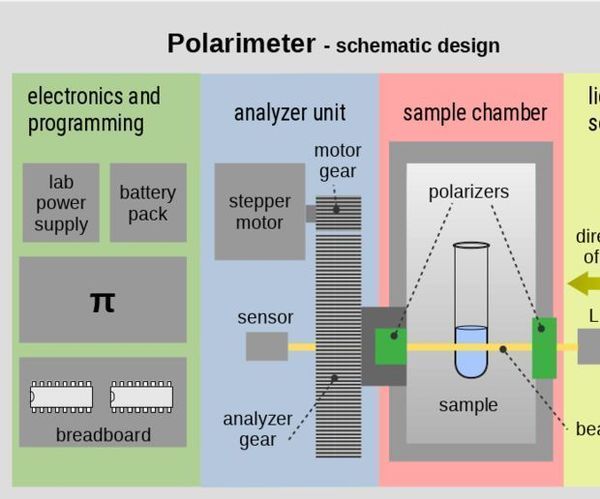
Polarimeter With RaspberryPi
"A polarimeter is an instrument often used in chemistry to determine the concentration or purity of specific substances, like sugars or organic acids. Basically a light beam is -linearly- polarized by passing through a polarizer (filter sheet, crystal, mirror) after which the light propagates in one plane. When this light passes through an optically active substance, this plane rotates depending on the substance, it's concentration, the temperature, the wavelength and length of the path through the medium. The amount of rotation can be measured with the analyzer, which is just another polarizer that can be rotated to return to a maximum or minimum intensity of light, as shown in image 2 ("analysis with polarized light"). The capability to turn the plane of polarized light is characteristic for each substance and is listed as "specific rotation". Image 3 ("specific rotation and usage") shows the related formulas and gives an example." [...]
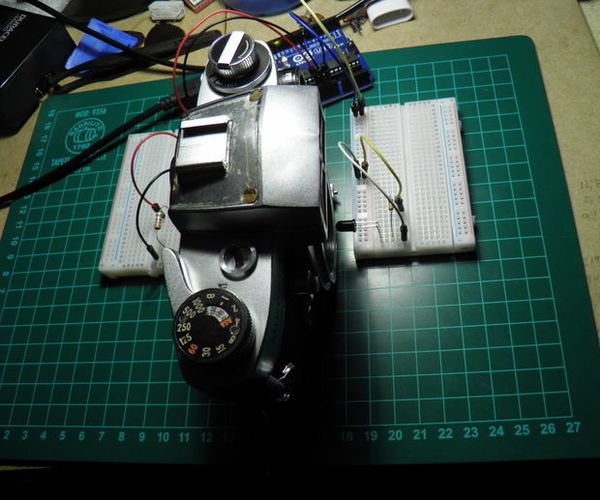
Arduino Film Camera Shutter Checker
"Recently I bought two used-old film cameras. After cleaning them I realized that the shutter speed could be lagged by the dust, corrosion or oil lack, so I decided to make something for measuring the real exposition time of any camera, because, by my bare eyes, I can't measure it precisely.This project uses Arduino as the main component for measuring the exposition time. We are going to make an opto couple (IR LED and an IR photo-transistor) and read how much time the camera's shutter is open. First, I will explain the fast way to achieve our goal and, at the end, we'll see all the theory behind this project. List of components: 1 x Film Camera 1 x Arduino Uno 2 x 220 Ω Carbon film resistor 1 x IR LED 1 x Phototransistor 2 x Small breadboards (or 1 big breadboard, big enough to fit the camera in the center) Many jumpers or cable *This extra components are needed for the explanation section 1 x Normal Color LED 1 x Momentary push button" [...]
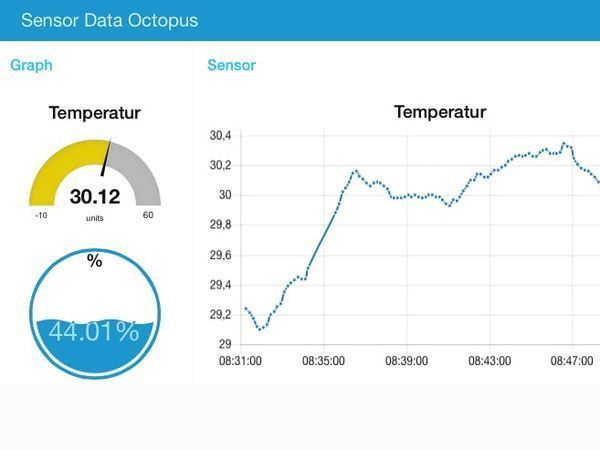
Easy Start into the World of IoT with MQTT
"MQTT is a messaging protocol for the IoT. In this example, we show how quickly you can get up and running without a single line of code! Story The Internet of Things is getting everywhere - so more important it is to understand the principals behind. In this example we show how easy everybody can build its own ideas for the digital world based on open standards like Arduino, MQTT, Node-RED... in a simple and easy "visual" coding. You will not type any line of code - but of course you can modify later on the generated sketch as you want. Ready?" [...]
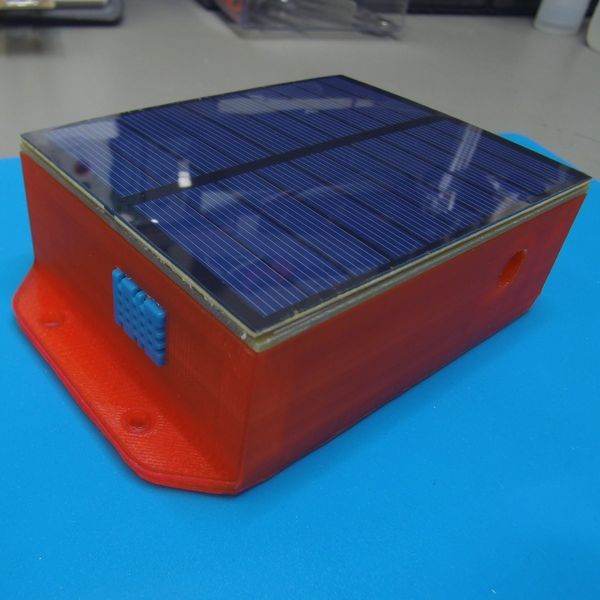
PTPM Energy Scavenger
"Photovoltaic, Thermoelectric, Piezoelectric, Magnetic induction Energy scavenger Long lasting power is the greatest barrier to large scale use of information gathering sensor networks. Powering these devices from batteries drastically increases their installation and maintenance costs. Solution lies in giving them ability to scavenge energy already present in the environment. Devices would be able to operate 10 to 20 years without any maintenance and it would drastically increase shelf life since they won't require pre-charged batteries. The goal of this project is to make universal bed around which custom wireless sensing devices can be built. Solution will be highly user customizable and easy for installation, saving on biggest cost in supply chain - human labor." [...]
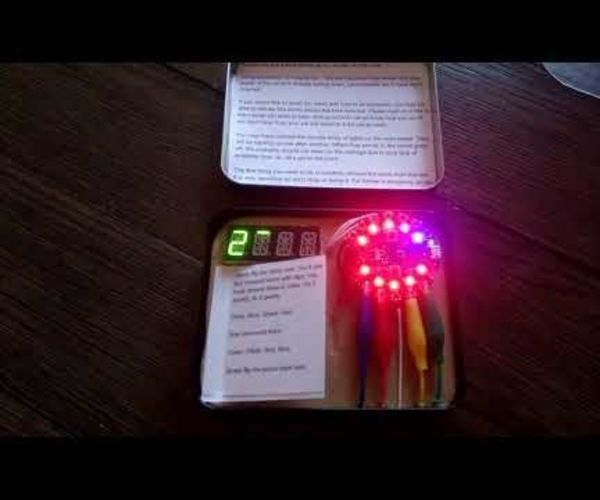
How to Defuse a Time Bomb Game
"This idea just came to me out of the blue. I couldn't really find anything quite like it. The original idea was much more involved, so this is a simplified version of the game. This is a "time bomb". You have to defuse it before the clock counts down. It uses the accelerometer, sound detection, touch sensors and more to make it difficult to defuse." [...]
Z1: Wifi-Controlled Robot Arm
"This is the 3D printed Robotic arm that I designed. The goal was to make a robot that was both easy to build and easy to control. If you are interested in buying a kit for this robot you can pre-order one at my site http://zaxrobotics.com The robot can be controlled by any means but it is designed to use the Esp32 and a custom breakout board. I'll release the designs then they are finalized. With this breakout board, the arm can be controlled and trained via any device via wifi. This is also available on my site." [...]

DIY Home Computer
"I published an Instructable a while back using an Espruino Pico to make a home computer: https://www.instructables.com/id/Make-Your-Own-Hom... That one required you to connect a VGA monitor by cutting up a VGA cable, but for this Instructable I'm using a board called Pixl.js, which has the LCD screen built-in. It means all you have to connect are a few wires and you've got a properly usable tiny, low-power computer. So what do you need? An Espruino Pixl.jsA piece of plastic or wood to act as a baseA Breadboard 4x 4x4 KeyPadsLots of Stickers for the keys6 sets of 8x Male->Male Dupont-style Jumper wires (48 wires total) - matching multicoloured strips make life a lot easier" [...]
Crystal LED (Neopixel) DIY
"Follow this instruction and make your own LED (Neopixel : WS2812B) light! Welcome again. This tutorial gives you a simple way to make the beautiful light in few hours. All you need is just to download 3d cad file I shared and print them by using 3d printer. It is okay if you don't code. In this tutorial, we are going to use a ready-to-go LED controller and a remote controller." [...]
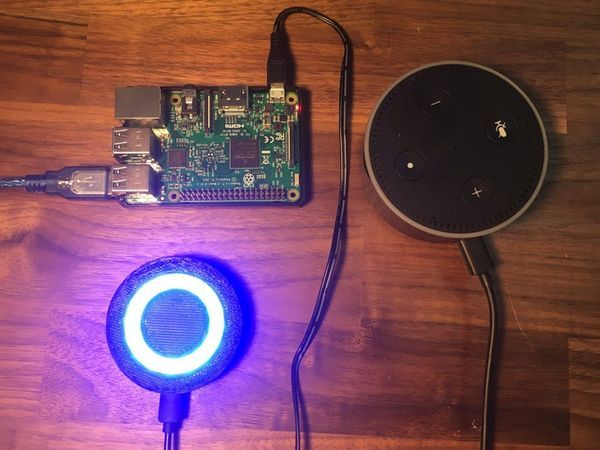
3D Printer Monitoring with Alexa and Arduino
"This gadget allows users to monitor many aspects of their 3D printer and current 3D print through a NeoPixel ring and a custom Alexa skill. Story Intro and Overview When I start a 3D print I don’t sit around waiting for it to finish so I can start another one, I get up and do something more productive. This though, can sometimes lead to problems like me forgetting whether or not my printer is currently printing or wondering how much time it will be until I can start another print. The desire to be able to remotely monitor my print led me to OctoPrint, a program which when loaded onto a raspberry pi and connected to a 3D printer lets the printer be controlled and monitored from a website. Though this helped, I wasn't a fan of having to pull out my phone every time I was curious of my 3D printer's state. So, I made it even easier for myself to check on my printer by creating what I call 3D Printer Host." [...]
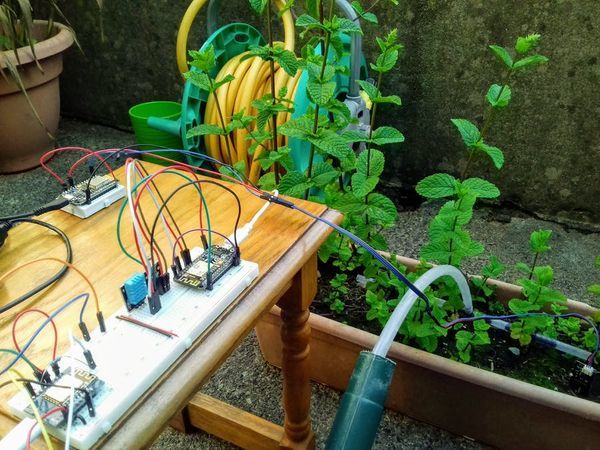
Python/MicroPython IoT Framework Example - Auto Irrigation
"A Py/mPy auto irrigation system with push notifications to Android, and rainfall prediction with Darksky API for more efficient water usage. Story Idea: The idea of this tutorial is to provide examples of how to read sensor data with MicroPython devices. Then how to do some useful stuff with that sensor data, using a RPi running its bigger sibling, Python. You will find examples of code that can be used for measuring distance (Water Level), controlling relays (The Pump), Soil Moisture (Capacitive Soil Moisture), Temp & Humidity (DHT11) and Light level using a photoresistor. The RPi code shows how to send Push notifications, write data to a Google Sheet, request weather forecast data from Darksky and how to use HTTP requests with a web app to monitor and interface with your mPy devices. Secondly, to build an example code framework which can be quickly and easily modified to use for all future mPy projects." [...]
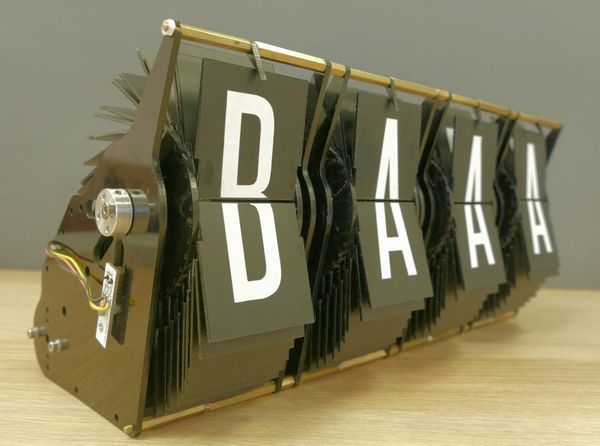
IoT Split-flap Weather Forecast Powered by XOD
"Hi everyone! In this instructable, I tell you how to make split-flap display and show the current weather conditions on it. Also how to fetch the weather information from the Web using Wi-Fi and API. I am a fan of the XOD visual programming environment. With the 0.22.0 version, XOD entered the Internet of things. So I have an excellent opportunity to create a device in the style of IOT and program it using XOD." [...]

Make a 2 Sided, Desktop Infinity Mirror
"Most of the infinity mirrors that I've seen are one sided, but I wanted to build one a little bit different. This one is going to be 2 sided and designed so that it can be displayed on a desktop or a shelf. It's an easy, very cool project to make! To me it kind of looks like it could be a Stargate. If you would like to see a video version of this instructable, you can view it here: https://youtu.be/tkZN4qPhjJ4 Tools Needed: Jig SawJig Saw BladeDrill1/4" Brad Point Drill Bit3/16" Drill BitRafter SquareWood GlueWood FileSoldering IronSolderParts Needed: 1/2" x 3/4" BoardWood for the BaseLED StripBarrel Plug12 VDC Power SupplyPlexiglassWindow Tint, Mirror Silver 5% (very dark)1/4" - 20 1" Long Bolts1/4" - 20 Nylon Lock Nuts" [...]

Octopod: Smart IoT Home Automation Project
"Octopod, a uniquely shaped full home automation system that allows you to monitor your home and keep security with AI and smart RFID locks. There are many IoT home automation projects out there, but trust me there is nothing like this! Octopod is made using NodeMCU (MAX32620FTHR or Arduino MKR 1010) , Arduino Uno, and Raspberry Pi 3. Octopod allows you to make your home smart. Octopod sends you a variety of data like temperature, humidity, and gas quality inside your home. Octopod sends you notification whenever it detects any sort of motion inside and tells you when you need to water your plants." [...]
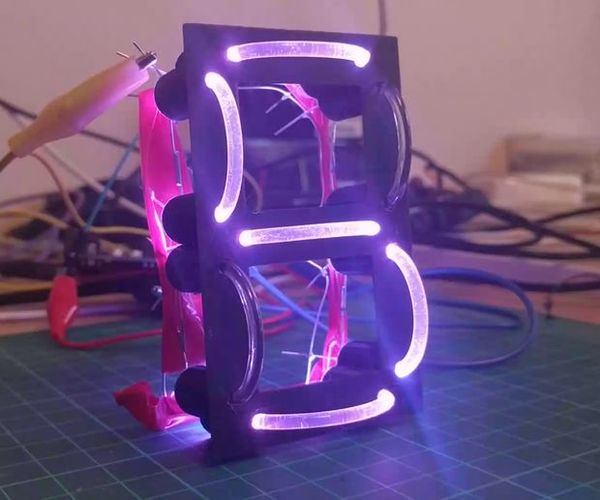
Lightpipe 7-Segment Display
"What if I told you that you could build a display out of shoe laces!? Well that is exactly what I've done!Building your own seven segment display is nothing new, it's a very common Arduino project, but I had an idea for this one so I said I'd give it a go, and I am absolutely delighted with how it came out! It's made from Light up shoe laces (light pipe), some addressable RGB LEDs (Neopixels) and a 3D print.The idea behind this design was inspired by the Cob LED projects that Unexpected Maker and David Watts are working on.In this Instructable I'm going to show you how I made it and some thoughts and suggestions I have for a second version! " [...]

Variable Lab Bench Power Supply!
"Have you ever been creating your new project and held back by you lack of control over your power source? Well this is the project for you! Today I'll be showing you how to make an amazing lab bench power supply for very cheap! I made this whole thing for about $25 AUD and it looks and works great! " [...]
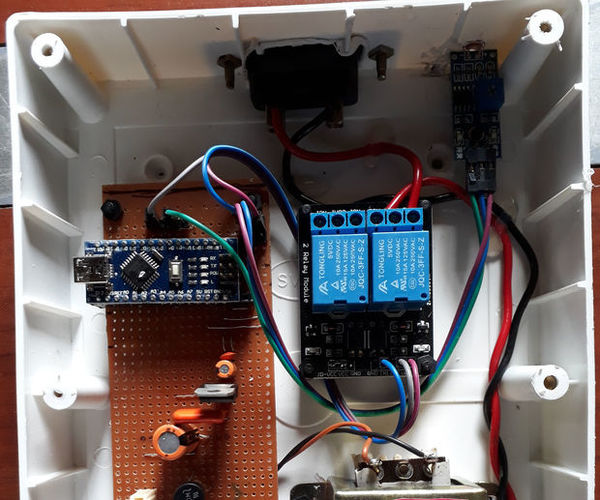
Motion Activated Light Switch With Light Sensor
"Motion activated light switch have many application both in home and in office. This , however , have added advantage of incorporating a light sensor , so that , this light can only triggered at Night time. " [...]
That's all Folks!


